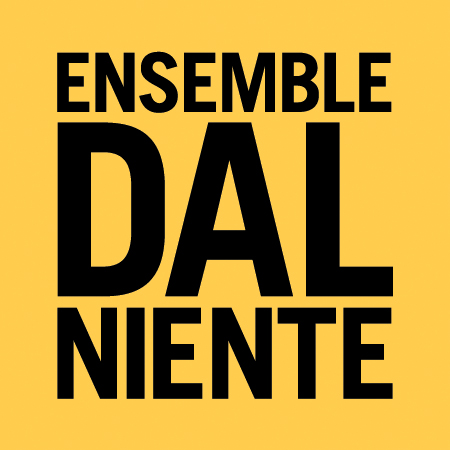“Think of the underworld as the back of your closet, behind all those racks of clothes that you don’t wear anymore. Things are always getting pushed back there and forgotten about. The underworld is full of things that you’ve forgotten about. Some of them, if only you could remember, you might want to take them back. Trips to the underworld are always very nostalgic. It’s darker in there. The seasons don’t match. Mostly people end up there by accident, or else because in the end there was nowhere else to go. Only heroes and girl detectives go to the underworld on purpose.”
In this interview, EDN violist Ammie Brod sits down with composer Katie Young to ask some questions about When Stranger Things Happen, Young's new monodramatic work that Ensemble Dal Niente will premiere as part of its STAGED series in 2017-2018.
Q: Your piece, When Stranger Things Happen, is inspired by Kelly Link’s short story, The Girl Detective. Can you tell us more about that connection and why you felt moved to work with this particular story?
A: Well, I love Kelly Link’s work, and I have a long relationship with her writing - I first read her in 2005. This particular story deals extensively with loss and searching: for objects, for people, for experiences we can’t regain. But it deals with these heavy experiences in a way that’s both highly stylized and yet somehow still charmingly playful, and I really liked those contrasting elements. I also got kind of obsessed with an image from the story, or maybe an image that I invented for myself after reading the story so many times, of Amelia Earhart’s plane on the bottom of the ocean, surrounded by lost objects in a dreamy drifting space.
The structure of the story is really dynamic and has been a big influence on the form of my piece. The story is very structured but also has a highly fragmented, non-linear quality that informs the structure of my piece and the way it explores its soundworld.. The detection that we’re doing is sonic.
Q: Can you talk more about that last part? How do you communicate a story sonically?
A: I decided pretty early on that I was going to steer clear of a direct retelling of the story itself, but I want to translate some of the larger ideas from the story into the music. Mirroring the loss, detection, and creative reassembly that the Girl Detective moves through in the story, the music also works through these processes.
For one, I knew the monodrama was going to incorporate three stand-alone pieces that I was writing: one for solo electric guitar, one for mixed ensemble, and one for percussion quartet. These pieces work as source material that will be fragmented (“lost”) and recombined to create the larger work.
One of my favorite parts of the story are these lists of lost (and sometimes rediscovered) objects that pop up throughout. I compiled a list of all of them and considered how they could be used to actually make sounds. For example, Amelia Earhart...she’s missing. I thought about propeller blades of her airplane and extrapolated that out to fans. Fans are used throughout the piece to create sound - on the guitar, on their own as prepared objects, or even just by bumping the spinning blades up against the music stand.
Excerpt from Katie Young's list of lost (and sometimes rediscovered) objects that pop up throughout The Girl Detective
Spending all this time thinking about these lost objects from the story got me thinking about things I’ve lost - insignificant things like my keys or actually very meaningful things like a piece of jewelry my mom gave me. And then, of course, we lose people, relationships, parts of ourselves, our teeth!...
I work best in collaborative scenarios - getting to know people better is one of the things that keeps me doing this whole music thing - and so I invited the performers to submit their own lost objects to the list, with stories if they wanted to share. Then I chose objects from the various lists that could either be used as preparations for traditional instruments, as sonic objects in and of themselves, or as metaphorical representations of less concrete concepts. For example, the electric guitar is prepared with bobby pins, pieces of jewelry, fans, playing cards...
objects used in electric guitar preparation
Q: What are you excited about regarding the final production?
A: We have an amazing group of women working on this project that I am super excited to work with: Eliza Brown is writing an incredible work that I can’t wait to experience. Amanda De Boer is such a compelling presence on stage, with such a beautiful voice and brings deep thinking and creativity to the project. And Emmi Hilger, who’s directing, possesses a clarity that has already proven so inspiring for me. I can’t wait to see what we all come up with!
-Ammie Brod and Katie Young



